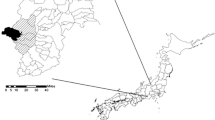Abstract
With the current wave of Asian immigration to the United States, awareness of their use of traditional medicine, often in combination with Western medicine, is an increasingly salient issue for health care professionals. This paper describes the use of traditional and Western medicine by Korean American elderly and factors that are associated with their health-seeking behaviors and health service utilization. Data were obtained from a convenience sample of 205 Korean elderly immigrants through interview. The findings revealed that health service utilization among Korean American elderly covered a broad spectrum of health resources, including the use of Western medicine, the traditional Korean medicine (hanbang), or both Western and traditional clinics. In addition, health insurance status and the source of health care were found to relate to the types of health service that Korean American elderly chose to utilize. Better understanding of patterns of health service utilization may improve the quality of health care by increasing health providers' cultural sensitivity and facilitating adequate communication between Asian immigrant clients and their care providers. Implications for research and practice are discussed.
Similar content being viewed by others
REFERENCES
Humes K, McKinnon J. The Asian and Pacific Islander population in the United States: March 1999, U. S. Census Bureau, Current Population Reports, Series P20-529. Washington, DC:U. S. Government Printing Office, 2000.
Day JC. Population projections of the United States by age, sex, race, and Hispanic origin: 1995 to 2050, U. S. Bureau of the Census, Current Population Reports, P25-1130. Washington, DC:U. S. Government Printing Office, 1996.
Juon HS, Choi Y, Kim MT. Cancer screening behaviors among Korean-American women. Cancer Detect Prev 2000; 24:1–13.
Leong F. Guest editor's introduction. Asian Am Pacific Islander J Health 1994; 2:89–91.
Lin-Fu JW. Asian and Pacific Islanders: An overview of demographic characteristics and health care issues. Asian Am Pacific Islander J Health 1993; 1:21–36.
Douglas KC, Fujimoto D. Asian Pacific Islanders: Implications for health care providers. Ethnogeriatrics 1995; 11:69–82.
Kraut AM. Healers and strangers: Immigrant attitude toward the physician in America—A relationship in historical perspective. JAMA 1990; 263:1807–1811.
Ma GX. Between two worlds: The use of traditional and Western health services by Chinese immigrants. J Community Health 1999; 24:421–437.
Pearl WS, Leo P, Tsang WO. Use of Chinese therapies among Chinese patients seeking emergency department care. Ann Emerg Med 1995; 26:735–738.
Penn NE, Kar S, Kramer J, Skinner J, Zambrana, RE. Panel VI: Ethnic minorities, health care systems, and behavior. Health Psychol 1995; 14:641–646.
Sung CL. Asian patients' distrust of Western medical care: One perspective. Mt Sinai J Med 1999; 66:259–261.
Pourat N, Lubben J, Wallace SP, Moon A. Predictors of use of traditional Korean healers among elderly Koreans in Los Angeles. Gerontologist 1999; 39:711–719.
Chin SY. This, that, and other. Managing illness in a first-generation Korean American family. West J Med 1992; 157:305–309.
Son AHK. Modernization of medical care in Korea (1876–1990). Soc Sci Med 1999; 49:543–550.
Porkert M, Ullman C. Chinese medicine. New York: William & Morrow, 1988.
Pang KY. The practice of traditional Korean medicine in Washington, D. C. Soc Sci Med 1989; 28:875–884.
Hsiao WC, Braun P, Yntema D, Becker ER. Estimating physicians' work for a resource-based relative-value scale. In KL White, J Frenk, C Ordóñez, JM Paganini and B Starfield (Eds). Health services research: An anthology. Washington, DC: Pan American Health Organization, 1992, pp. 1012–1021.
Spring MA. Ethnopharmacologic analysis of medicinal plants used by Laotian Hmong refugees in Minnesota. J Ethnopharmacol 1989; 26:65–91.
Kim MT, Juon HS, Hill MN, Post W, Kim KB. Cardiovascular disease risk factors in Korean American elderly. West J Nurs Res 2001; 23:269–282.
Kim MT, Kim KB, Juon HS, Hill MN. Prevalence and factors associated with high blood pressure in Korean Americans. Ethn Dis 2000; 10:364–374.
Substance Abuse and Mental Health Services Administration. National household survey on drug abuse: Main findings 1991. Rockville, MD: U. S. Department of Health and Human Services, 1993.
Shin HS, Kim MT, Juon HS, Kim J, Kim KB. Patterns and factors associated with health care utilization among Korean American elderly. Asian Am Pacific Islander J Health 2000; 8:117–129.
Author information
Authors and Affiliations
Rights and permissions
About this article
Cite this article
Kim, M., Han, HR., Kim, K.B. et al. The Use of Traditional and Western Medicine Among Korean American Elderly. Journal of Community Health 27, 109–120 (2002). https://doi.org/10.1023/A:1014509200352
Issue Date:
DOI: https://doi.org/10.1023/A:1014509200352




